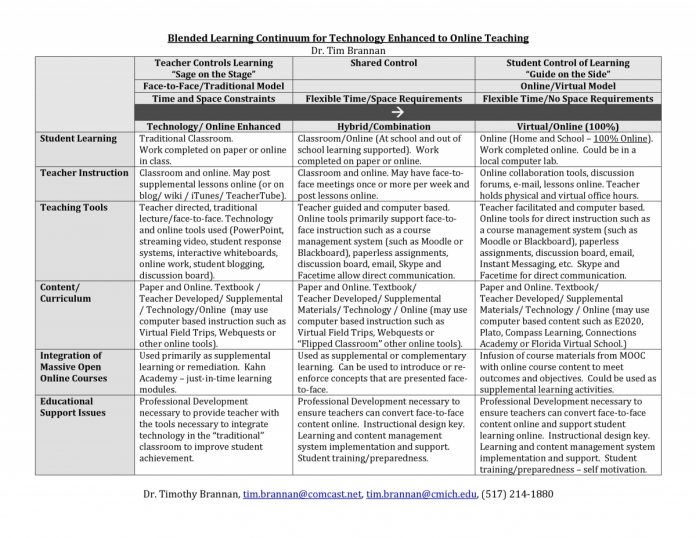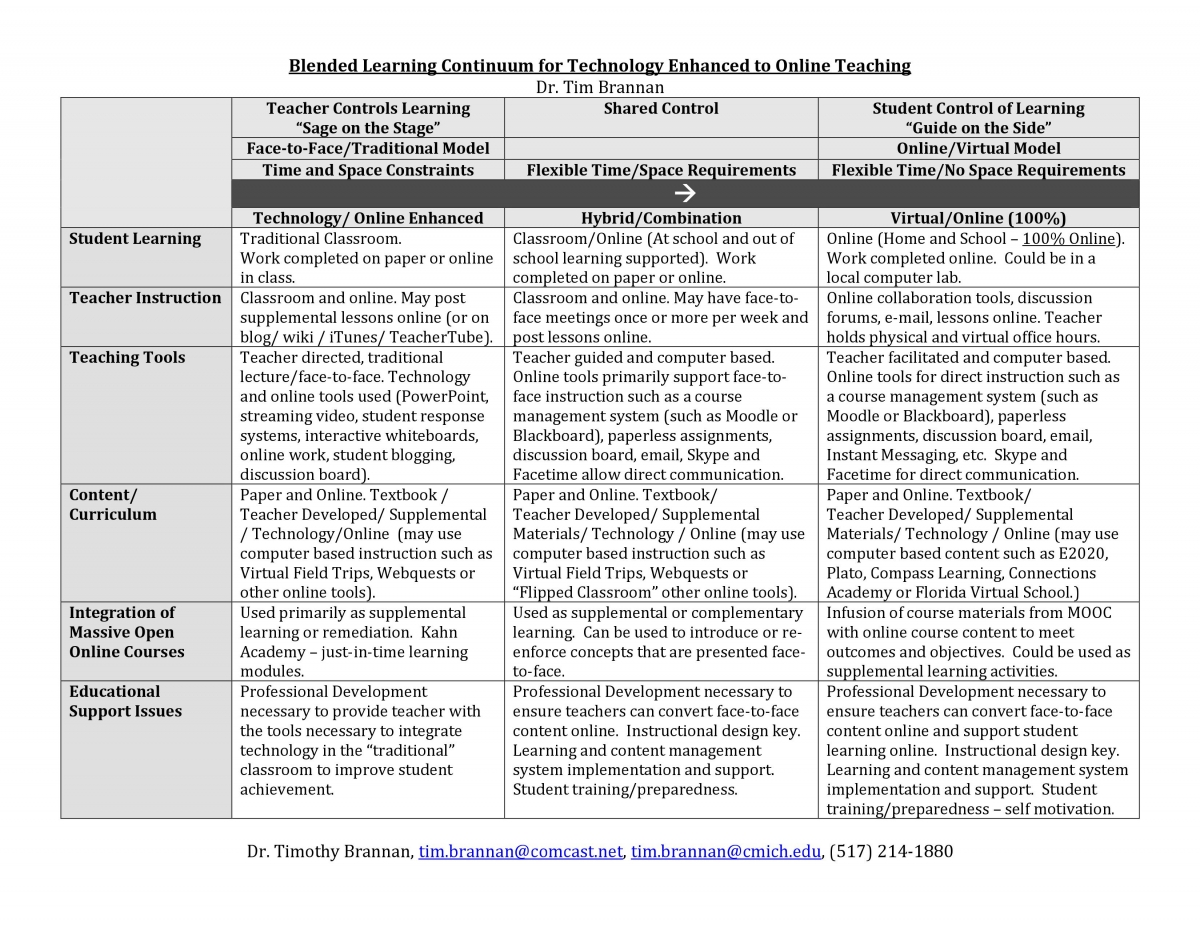
Much has been written about Massive Open Online Courses (MOOCs) and how they will impact higher education. However, very little has been explored about how these curricula can be leveraged in a blended learning environment in corporate training. The “Blended Learning Continuum”—from face-to-face to virtual course delivery—provides a useful tool to demonstrate how trainers can effectively infuse technology tools, including MOOCs, into their classroom. This Blended Learning Continuum provides corporations with a practical guide that will allow even the most inexperienced trainer to better understand his or her role in addressing integration of technology in the classroom to improve learner achievement.
Trainers can utilize educational technology to improve not only learner achievement, but to improve pedagogy and meet digital natives on their own turf. The technology era has deeply engrained itself in our culture; educators need to leverage its strengths and avoid its pitfalls. The continuum moves from the traditional education model of “Sage on the Stage,” face-to-face environment—where learners and trainers are in the same location, at the same time and where technology is used to enhance or supplement the instruction after the fact—to the online/virtual model, where learners are empowered to control the learning and the educator is the “Guide on the Side.” This model provides for flexible time and space requirements and truly allows the student to work at his or her own pace. A model for this type of learning can be described as “just-in-time” as the learner needs the knowledge and also includes a guided dissertation between educator and student. In between the two extremes is the “Hybrid/Combination” learning environment, which features flexible time and space requirements and the amount of “formal” instruction depends on the learning scenario.

Along the left-hand side of the grid in the model (which can be downloaded below) are categories that are affected based on a traditional classroom, hybrid/combination classroom, or virtual classroom. In the case of student learning, not only does the amount of initiative each learner must take increase, but the learner’s interaction with the technology increases to where the quality of the learning is dependent on how well the technology supports the learning environment. Motivation of the student needs to increase as the role of “formal instruction” decreases. With that said, the role of the teacher/facilitator of the learning doesn’t decrease as learning transitions to an online environment. In fact, he or she plays an even more important role of managing not only the content but the interaction between the learning and the content. The educator is less a “taskmaster” and more of a cheerleader as the learner meets learning objectives—the educator facilitates the passing of knowledge and is available for questions, to clarify assignments, lead online discussions, etc.
The teaching tools and content are similar for each of the models, but the amount of reliance upon them for knowledge transfer changes from the traditional to virtual classroom. In the traditional model, the tools and content are used more as a supplement to the face-to-face environment, while in the hybrid/combination classroom, they tend to complement the face-to-face classroom sessions. In the virtual model, the content is the main source for the instruction and the teaching tools become an avenue for the educator and learner to interact. In that same regard, the integration of Massive Open Online Courses can be leveraged in all three of the environments, e.g., in the traditional classroom, they can be used as remediation or as out-of-school time resources, while in the hybrid/combination classroom, they can be either supplemental to the learning or complementary—introducing concepts or reinforcing what was covered in the face-to-face environment. In the virtual environment, educators may break up an entire course to meet local outcomes and objectives or as a supplement to existing course content.
The final item on the left side of the continuum is support issues related to each of the modalities of instructional delivery. An entire book could be written about the need for technology support and training; however, this article is focused on the educator and learning. In the traditional classroom, professional development needed includes providing educators with the tools necessary to integrate technology in the “traditional” classroom to improve student achievement. Additionally, students will need to feel comfortable using the technology tools presented by the educator. Typically, the teacher will demonstrate and allow learners to practice during class time. For the hybrid/combination classroom, educators will need professional development to ensure they can convert face-to-face content to an online environment. Instructional design is key in aligning outcomes and objectives to content. Learning and content management system implementation and support is also a consideration. Student training consists of an orientation or even pre-assessment to gauge preparedness to learn online. The virtual environment takes the hybrid/combination environment to the next level as all content is presented online, and the learning/content management systems must support learner/faculty interaction, as well as provide a platform for communication, grading, etc. In this final model, learner motivation is key to learning as he or she actually “owns” the experience assisted by the facilitator.
The Blended Learning Continuum has been designed to provide a framework and quick reference guide for educators as they consider moving content from a traditional, face-to-face environment to a virtual environment. When integrated properly, with support and training, technology can improve the education process and student achievement.
Dr. Timothy Brannan is a professor at Central Michigan University. For more information, e-mail: tim.brannan@comcast.net, tim.brannan@cmich.ed


